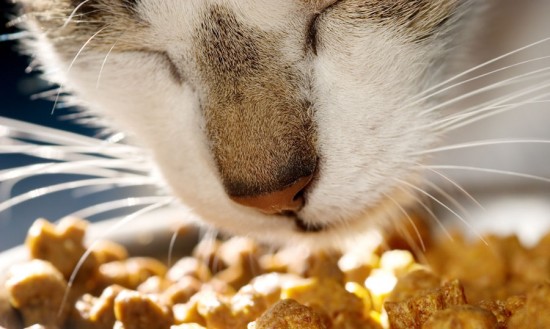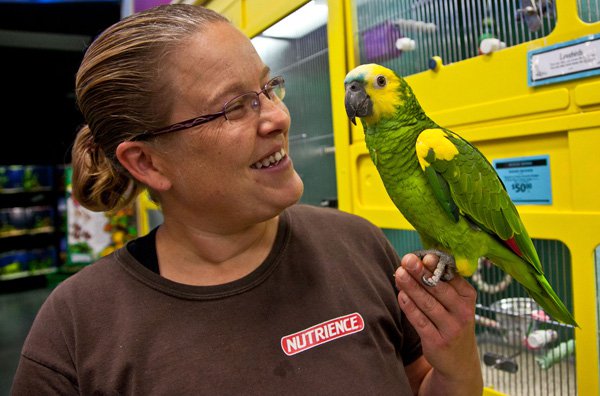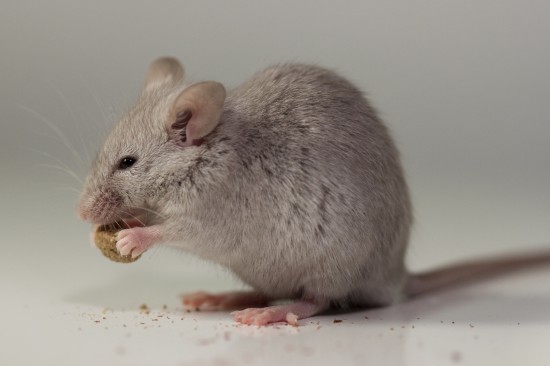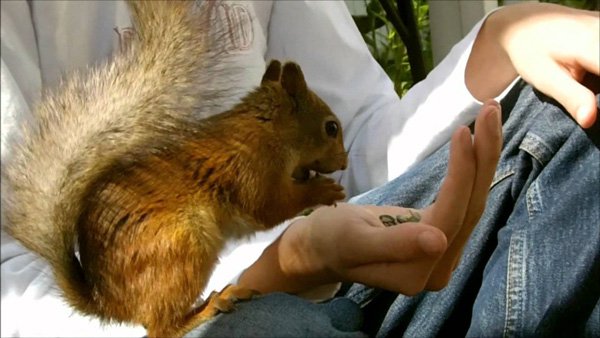So You Want to Breed Your Mare
You have the perfect sweet mare and you know (or hope) that she will be a perfect mama. She has good confirmation, is well behaved, learns easily and quickly and is very willing to please. Or maybe she is just not ridaeble due an injury but not in pain and well enough to carry a foal to term. How do you go about that? Well, the first thing you need to do is confirm all this with your veterinarian. He is the expert and can confirm or rule out your hopes and suspicions.
Once you know that your mare is a good candidate, you need to go 'shopping' for a stud. That can be really easy if you know already exactly which stallion you like, but if you don't know yet, you could start by picking up some magazines with advertisements for stallion services. Of course, your friends and local clubs and trainers as well as the registry for your particular breed may be able to help you too and make some recommendations. It is important to know beforehand what your goals are. Are you looking to breed a Reiner, a Dressage horse, a jumper or a Barrel Racer. Again, you are starting with your mare, what is her expertise?
Many breeders only breed within the breed, others like to try the 'designer' breeds. An Arab/Saddlebred cross is a good example. Just like in politics, there are many opinions.
Once you have zeroed in on a stud, it is time to prepare your mare. There are certain tests you should do before you even take her to the stud or consider ordering the semen. Mare can walk around for years with uterine infections without ever knowing it. The chances of getting her pregnant when an infection is present are slim, and if she gets pregnant there is a big chance of aborting the foal. So, my opinion is to better be safe than sorry and cough up the extra money to do the tests.
Jos Mottershead writes: "Most responsible stallion owners require a "clean uterine culture" from a mare prior to breeding her live cover or possibly shipping semen to her, and this has been the case for many years. It is well known however, that the results of an endometrial swab culture alone are, at best, not a reliable indicator of uterine pathogenicity, and at worst a false positive may result in disastrous consequences.
A recent Internet poll carried out on the largest non-professional equine reproduction e-mail list1 indicated that only about 50% of veterinarians routinely perform a cytology smear in conjunction with an endometrial culture. This means that there are still a large number of breeders who are operating under a mistaken belief that their mare is either "clean" when they are not, or who are treating a uterine infection that isn't really there!
What is the significance of the cytology smear?
A microscope slide smear of some of the fluid harvested from the endometrial surface of the uterus is prepared and then stained using a hematology stain. The slide is evaluated for the presence or absence of inflammatory cells, specifically neutrophils.
The combination of endometrial cytology smear and culture results offer the most accurate diagnostic tool connected with uterine swabbing and pathogenicity (an endometrial biopsy is probably more accurate, but is not necessarily cost-effective in all cases).
It has been suggested by some that if no neutrophils are identified on a cytology smear, it is not necessary to perform a culture of the sample, and the mare may be considered "clean". It has been indicated to me in personal communication however, that if Pseudomonas aeruginosa is identified with an absence of neutrophils, this may indicate the presence of the pathogen in a commensal state, which will not develop into an active infection until something triggers the occurrence. That something may be a suppression of the mare's uterine immune system as a result of elevated progesterone levels resulting from pregnancy. It is therefore suggested that a culture should still be completed regardless of absence of neutrophils, although it should be noted that there has not been peer-reviewed research that has proven this to date only clinical evidence, and as this is the only organism that has been suggested to behave in this manner, there is a great likelihood that the absence of neutrophils alone will indicate a "clean" uterus in the vast majority of cases.
If neutrophils are present on the slide, but there is an absence of pathogen growth on the culture, this indicates that there is something irritating the uterus, and it is most likely that it is a pathogen that was missed during sampling. Collection of a surface sample of the endometrial lining of the uterus with the guarded endometrial swab is undoubtedly the easiest method of sampling. Research3 has however suggested that in mares that are considered barren or subfertile, a low volume (60-ml) uterine flush with phosphate buffered saline, introduced via a trans-cervical balloon catheter, in order that the majority of the introduced fluid may subsequently be recovered, yields a more accurate harvesting method to indicate both cytological and bacterial results. A portion of the recovered fluid is concentrated by centrifugation, and after removal of the supernatant and resuspension of the resultant pellet in a lower volume of liquid; a culture is prepared of the harvested matter. The centrifugation is performed to enable a concentrated growth to become apparent, should an organism be present. A cytology smear is prepared using a sample taken from the non-centrifuged portion of the recovered fluid. Preparation using the centrifuged portion would reveal distorted cells that could make interpretation of the results difficult. A practical approach for using this more complicated sampling method rather than the guarded swab, would be to use it only on those mares that have previously proven themselves to be subfertile, or where a previous sample using a guarded swab has resulted in an absence of a pathogen in culture, but the presence of neutrophils in the cytology smear.
Worst case scenario:
In the worst case scenario, a mare with a clean uterus has an endometrial swab performed, which is then subjected to a culture but not a cytology smear. The result is returned as being "positive" for a pathogen, and intra-uterine antibiotic therapy is initiated even though there is actually no pathogen present in the uterus and the diagnosis is erroneous. When one introduces an antibiotic into the uterus, one must consider the possibility of the creation of a "superinfection" where an opportunistic organism - Pseudomonas aeruginosa and yeasts are two such - becomes active. A similar situation is seen in human females who are placed on an antibiotic and subsequently develop a vaginal yeast infection. In the equine, the opportunistic organisms such as those named can be extremely difficult to eradicate, and may lead to permanent damage to the endometrium resulting in alteration of the endometrial biopsy score, and a lowered chance of the mare subsequently producing a live foal.
Summary:
If a cytology smear is not prepared in conjunction with the culture of the swab sample, then the results of the culture as far as showing pathogenic status of the uterus are WORTHLESS!!!! It is essential that if a "positive culture" result is given that there be neutrophils also seen on a cytology smear - without those neutrophils present, it is most likely that the culture result is indicative of a contaminated sample! So - no cytology, no accuracy!"
Okay, now that we have that out of the way, you can go ahead and either send your mare to the stud or have the vet order the semen at the right time. Timing is very important especially when you plan for AI. The lifespan of the semen is only a couple of days and the older they get the less volatile it is. Make sure the people sending the semen are reputable and send only healthy semen in the correct solution. Each mare ovulates on a different schedule. If your mare has been bred before, this schedule may be known, otherwise your vet will have to make his best bet.
When I breed my mare, she goes to the stud even though she still gets impregnated through Artificial Insemination (AI). The main reason I send her is that when she is there she can be AI'd 2 or 3 times with the freshest semen possible. The cost of shipping her outweighed the cost of having semen shipped and AI by the vet more than once. Again, there are as many opinions on the topic of AI or penetration/pasture breeding as there are horse breeders, so I will not get into that.
Now it is time to wait...approximately 2 weeks until you can finally have the ultrasound done to confirm that your mare is pregnant. I remember being almost as excited about the good news as when I found out I was pregnant myself! Now you have approximately 11 months to get ready for the BIG day. It is very important that you have a Foaling Kit ready and handy well before the due date.
Here is a list of what is essential in the Foaling Kit:
Terry Cloth (bath towel or half-size bath towels)
Stainless-steel bucket
Liquid soap such as Ivory, Dawn, or Joy
Roll of cotton
Baling twine or strong string
Scissors
Enemas (any enema safe for children is fine; a phosphate enema is best)
Tincture of iodine or Nolvasan solution for dipping navel
Small plastic containers or 60cc plastic syringe cases (for dipping foal's navel)
Umbilical clamp or rubber bands (in case foal's navel bleeds more than usual)
Obstetrical sleeves or plastic rectal sleeves
Disposable tail wrap or gauze bandage (for wrapping tail)
Disposable latex gloves
Obstetric lubricant or KY jelly
Digital thermometer
Small blanket or old down vest (in case you have to keep the foal warm on a cold night)
Flashlights and batteries (in case of power failure)
Cell phone or cordless phone
Phone numbers of vets, experienced foaling person (keep list next to phone)

 How To Care For An African Pygmy Hedgehog
How To Care For An African Pygmy Hedgehog
 Buy Nutritional Feed For Effective Treatment Of Ulcers In Horses
Buy Nutritional Feed For Effective Treatment Of Ulcers In Horses
 Famished Felines - Could Your Cat Have An Overactive Thyroid Gland?
Famished Felines - Could Your Cat Have An Overactive Thyroid Gland?
 Why Proper Dog Grooming Session is Important for Every Dog?
Why Proper Dog Grooming Session is Important for Every Dog?
 The Difference Between An American Spaniel And An English Cocker
The Difference Between An American Spaniel And An English Cocker
 What Do Mice Eat?
What Do Mice Eat?
 Taking care of you sick dog
Taking care of you sick dog
It is one of the w
Taking care of you sick dog
Taking care of you sick dog
It is one of the w
 Dogs And Children
Dogs And Children
Dogs And Children
Dogs And Children
 More About The Lovely Entlebucher Mountain Dog
More About The Lo
More About The Lovely Entlebucher Mountain Dog
More About The Lo
 The Differences Between The Maltese Dog And The Coton De Tulear
The Differences B
The Differences Between The Maltese Dog And The Coton De Tulear
The Differences B
 What Is Histoplasmosis Fungal Infection In Dogs ?
What Is Histoplas
What Is Histoplasmosis Fungal Infection In Dogs ?
What Is Histoplas